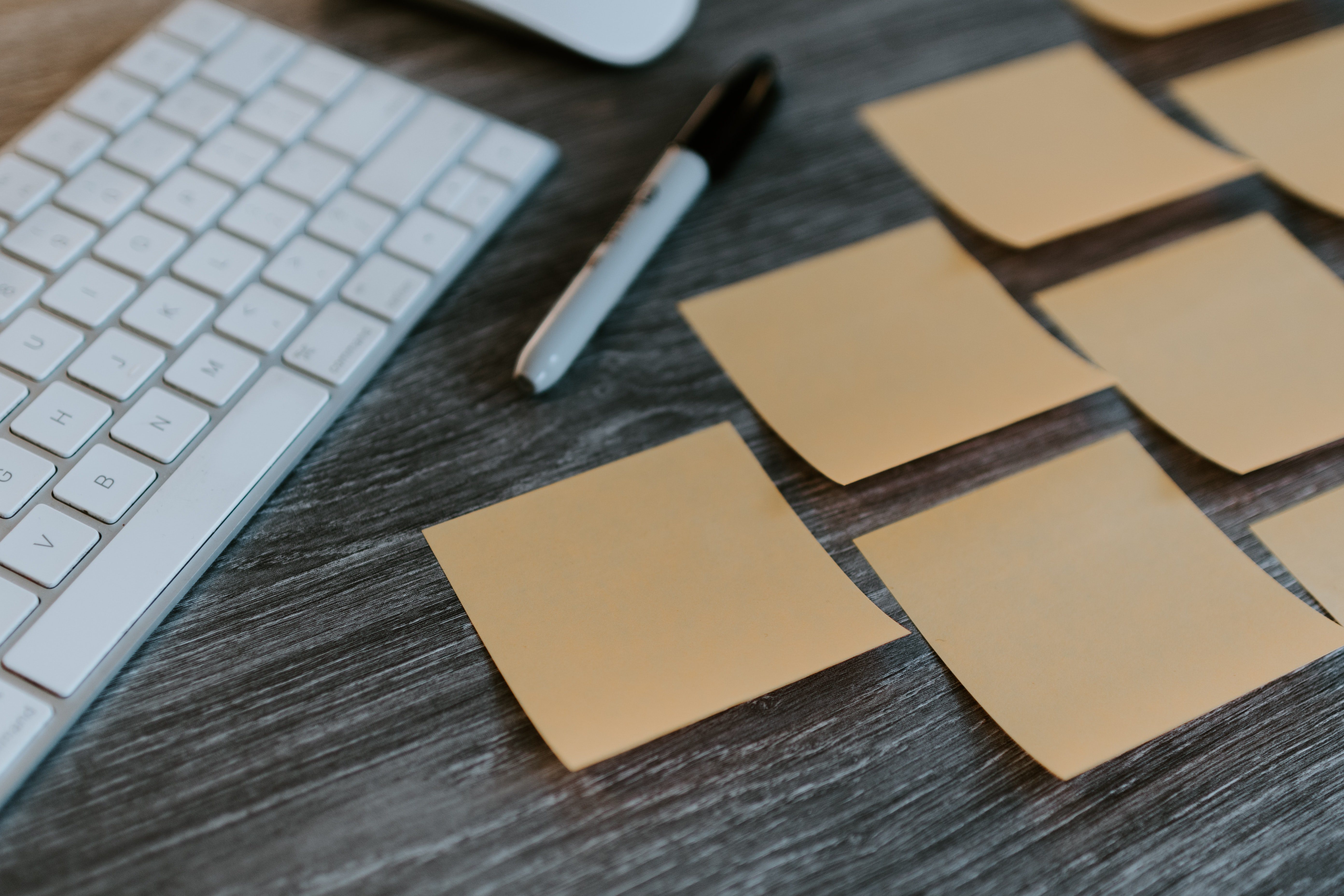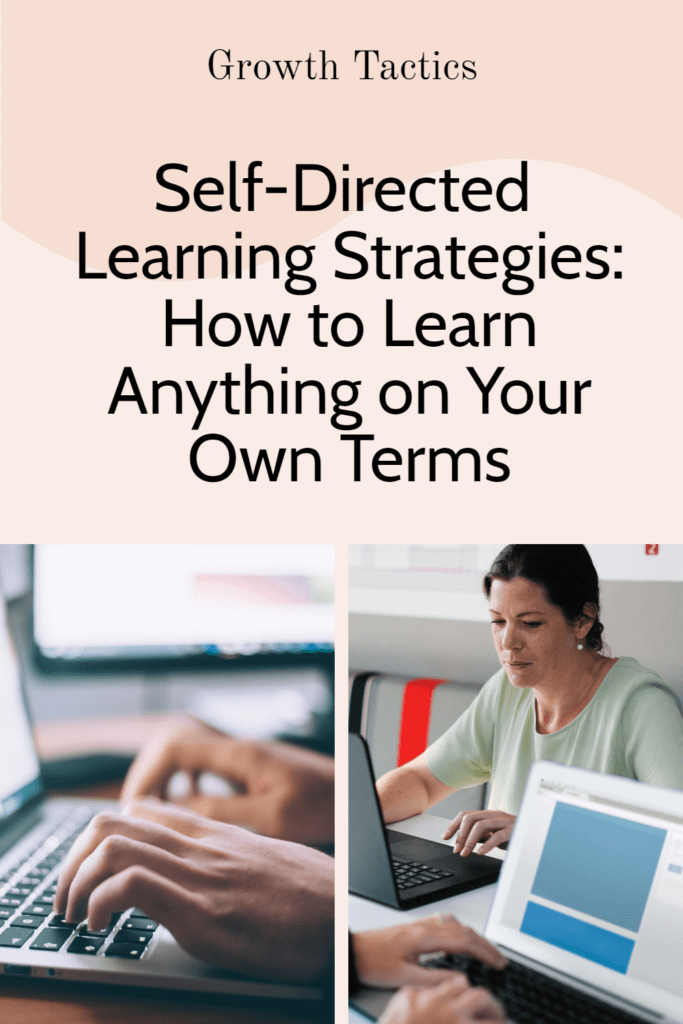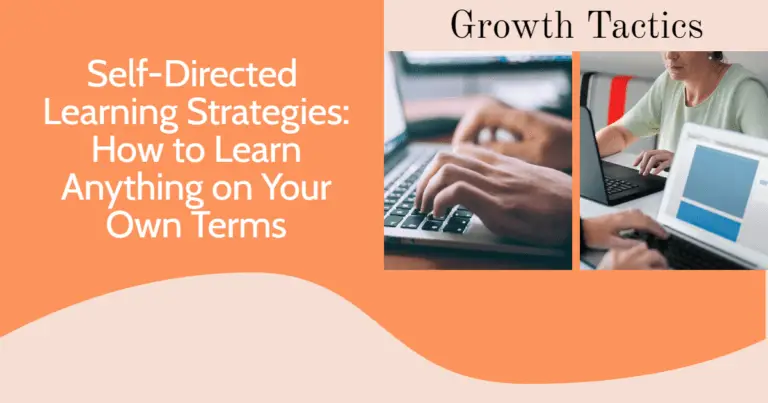Self-directed learning puts you in the driver’s seat of your education. It’s about learning what you want when you want, and how you want.
Think about it. You’re unique. Your learning should be too. Self-directed learning lets you fit education into your life, not the other way around. It’s like being the boss of your own growth.
I’ve seen countless people transform their lives through this approach. They’ve found purpose, solved problems, and become true leaders. You can do it too.
So, how do you become successful with self-directed learning?
Jump To Section
Set Your Own Goals
It’s the first big step in self-directed learning. And guess what? You’re in charge here.
Start simple. Write down what you want to achieve. Maybe you’re thinking, “I want to build a website for my business.” That’s great! But let’s break it down.
Think about the smaller steps. What needs to happen first? Maybe it’s “create an outline of my content” or “find someone to design my logo.” These are your building blocks.
Now, here’s where the magic happens. Take those small steps and make a plan. Give each task a deadline. Trust me, I’ve been there. Things will get delayed. Life happens. But that’s okay! With your plan, you’ll always know what’s next.
Develop a Growth Mindset

A growth mindset is an attitude that you can learn and grow, even if you have failed in the past. It’s about seeing challenges as opportunities for improvement, not as signs of your limitations.
A growth mindset is a powerful tool for self-directed learning because it helps you overcome obstacles and keep going when things get tough.
If you’re struggling with something new, don’t give up on yourself or blame others for your failures. Take ownership of your actions and use them as opportunities to improve yourself further down the line.
Identify Your Learning Style
Understanding and identifying your learning style is crucial for making the most of your self-directed learning efforts. By recognizing how you best absorb and retain information, you can tailor your study methods and resources to maximize your learning potential.
There are three primary learning styles: visual, auditory, and kinesthetic.
Visual
Visual learners process information best through images, graphs, and other visual aids. If you’re a visual learner, consider incorporating the following strategies and resources into your learning plan:
- Use videos or online tutorials with visual content to help you understand complex concepts.
- Create mind maps, flowcharts, or diagrams to organize and visualize information.
- Highlight and color-code your notes to make them more visually appealing and easier to remember.
Auditory
Auditory learners excel at processing information through listening and verbal communication. If you’re an auditory learner, try implementing these techniques and resources:
- Listen to podcasts, audiobooks, or recorded lectures on your chosen topic.
- Participate in group discussions or explain concepts to others to reinforce your understanding.
- Try mnemonic devices or create songs to help you remember key points or terminology.
Kinesethetic
Kinesthetic learners learn best through hands-on activities and physical experiences. If you’re a kinesthetic learner, incorporate the following methods and resources into your learning plan:
- Engage in practical, hands-on activities or experiments to apply your knowledge.
- Use physical objects, such as flashcards or manipulatives, to help you understand concepts.
- Take frequent breaks and incorporate movement or exercise into your study routine.
Keep in mind that many people have a combination of learning styles or may find that their preferred style varies depending on the subject matter. Experiment with different approaches to see what works best for you, and don’t be afraid to mix and match techniques from various learning styles.
By identifying your learning style and using it to your advantage, you can create a more personalized and effective self-directed learning experience. This will ultimately help you maximize your learning potential and achieve your educational goals more efficiently.
Organizing Your Learning

Create a Learning Plan
A well-structured learning plan is essential for organizing your self-directed learning journey. Start by setting clear, achievable goals and objectives for what you want to learn.
Break down these goals into smaller, manageable tasks, and prioritize them based on their importance or urgency.
Allocate a specific time frame for each task, ensuring you have enough time to effectively learn and practice the new skill.
When creating your learning plan, be realistic about your workload and your ability to commit to it. Don’t forget to leave room for flexibility and adjustments as you progress through your learning journey.
Utilize Resources and Tools
There are countless resources and tools available to support self-directed learning. Identify the resources that best fit your learning style and objectives, from online courses and tutorials to books, articles, and podcasts.
Make a list of these resources, and keep track of which ones you’ve completed, so you can monitor your progress.
In addition to educational content, there are numerous tools and platforms that can support your learning process. Some examples include note-taking apps, flashcard software, project management tools, and even social media platforms for connecting with other learners or experts in your field. Experiment with different resources and tools to find what works best for you.
Here are some links to resources and tools that can support your self-directed learning journey:
Online Courses and Tutorials
Books and Articles
Podcasts
Note-Taking Apps
Flashcard Software
Project Management Tools
Social Media Platforms
Establish a Study Routine

Consistency is key to achieving success in self-directed learning. Establishing a regular study routine helps you maintain focus and discipline throughout your learning journey.
Determine the best time of day for you to concentrate and learn, and set aside dedicated time each day or week for your studies. You may find that shorter, more frequent study sessions work better for you, or that longer, less frequent sessions are more productive.
Create an environment conducive to learning by minimizing distractions, such as turning off notifications on your devices, and setting up a comfortable and organized workspace.
Make sure to schedule breaks to rest and recharge your brain, as well as to prevent burnout.
Incorporate different learning techniques into your routine, such as active learning (e.g., summarizing, teaching others, or creating your own examples) and passive learning (e.g., reading, watching videos, or listening to lectures). This variety will help you stay engaged and ensure you’re approaching the material from different angles.
By organizing your self-directed learning through a thoughtfully crafted learning plan, the effective use of resources and tools, and a consistent study routine, you will be well-equipped to learn anything on your own terms and achieve your personal growth goals.
Engaging in Self-Reflection
Self-reflection is a key part of the self-directed learning process. It allows you to identify areas of improvement and set goals for yourself that will help you reach your full potential.
Self-reflection also helps you determine what you need to learn next so that when it comes time to return to school or work as a newly minted expert in your field, there’s no question about where your focus should be.
In order for this type of reflection to be effective at helping people learn new things on their own terms (and not just because someone else told them they needed more training), there are three key steps:
Steps
- Assess your current skills and knowledge: The first step in self-reflection involves evaluating your existing skills, knowledge, and experience. This can be done by listing your strengths and weaknesses, as well as the areas where you feel most and least confident. Consider taking online assessments or quizzes to gauge your current level of expertise in a particular subject. By understanding where you stand, you can better identify gaps in your knowledge and the areas that require improvement.
- Set realistic and specific goals: After assessing your current skills and knowledge, the next step is to set clear, achievable goals for yourself. These goals should be specific, measurable, attainable, relevant, and time-bound (SMART). By setting specific goals, you will have a clearer idea of what you want to achieve and the steps required to get there. This will help you stay focused on your learning journey and make it easier to track your progress.
- Develop a learning plan and track your progress: Once you have set your goals, create a learning plan that outlines the steps you’ll take to achieve them. This plan should include a timeline, resources you’ll use (such as books, courses, or online tutorials), and any milestones you want to reach along the way. As you work through your plan, regularly track your progress and update your goals as needed. This will help you stay motivated and ensure that your self-directed learning remains effective and on track.
By following these three steps, you can maximize the effectiveness of your self-reflection and ensure that your self-directed learning journey is both productive and fulfilling. Taking the time to evaluate your current skills, set SMART goals, and develop a learning plan will keep you focused on your objectives and pave the way for success in your chosen field.
Staying Motivated
In order to stay motivated during your self-directed learning journey, it’s crucial to create a system of rewards for yourself. By setting goals and celebrating your achievements, you’ll maintain a positive mindset and keep your focus on what matters most: learning.
One effective way to reward yourself is by setting specific, attainable goals and celebrating each milestone you reach. For instance, if your objective is to learn how to code and create an app using JavaScript, break down your larger goal into smaller, manageable tasks.
As you complete each task, treat yourself to a small reward, such as taking a break to enjoy a hobby or spending time with friends. These mini-celebrations will help reinforce your motivation and keep you on track.
Another approach to staying motivated is regularly monitoring your progress. You can do this through journaling or using habit-tracking apps like Habitica, which gamifies the process of tracking daily habits and tasks. By recording your achievements and reflecting on what you’ve learned over time, you’ll be able to clearly see the progress you’ve made.
This will not only serve as a source of inspiration but also help you identify areas where there’s still room for improvement. As a result, you’ll be better prepared to tackle new material and face challenges with confidence in the future.
Take Breaks and Rest

Taking breaks and allowing yourself to rest is vital in maintaining a healthy balance between learning and personal well-being.
Here are some ways to incorporate breaks and self-care into your self-directed learning routine:
- Pomodoro Technique: This time management method involves breaking your work into short, focused intervals (usually 25 minutes) called “Pomodoros,” followed by a 5-minute break. After completing four Pomodoros, take a longer break of 15-30 minutes.
- Exercise: Physical activity is essential for overall well-being and can also improve cognitive function. Schedule regular exercise breaks, such as going for a walk or participating in a workout class, to help clear your mind and boost your energy levels.
- Meditation and mindfulness: Incorporate mindfulness or meditation practices into your daily routine to help reduce stress and improve focus. Even just a few minutes of deep breathing or meditation can make a significant difference in your mental clarity and overall well-being.
- Connect with others: Spending time with loved ones, participating in social activities, or joining a study group can provide a much-needed break from learning and help you maintain a healthy work-life balance.
- Hobbies and interests: Make time for hobbies and interests outside of your learning goals. Engaging in activities you enjoy can help relieve stress and provide a sense of accomplishment and satisfaction.
- Establish a regular sleep schedule: Prioritize getting enough sleep, as it is crucial for cognitive function and overall health. Aim for 7-9 hours of sleep per night and maintain a consistent sleep schedule.
- Set boundaries: Establish clear boundaries between your study time and personal time. This can help prevent burnout and ensure that you maintain a healthy balance between learning and self-care.
Balance is essential for long-term success and maintaining a positive attitude toward learning.
You Can Be Successful!
Embarking on a self-directed learning journey is a powerful and transformative experience that can unlock your full potential. Remember that the key to success lies in setting realistic goals, identifying your learning style, maintaining a healthy balance between learning and self-care, and staying motivated throughout the process.
Always believe in yourself and recognize that every step you take, no matter how small, brings you closer to your goals. Embrace the challenges and obstacles that you may face along the way, as they provide valuable opportunities for growth and self-discovery. Surround yourself with supportive individuals who share your passion for learning, and never hesitate to seek feedback or help when needed.
With determination, perseverance, and a positive mindset, you can achieve remarkable accomplishments and become a lifelong learner who continuously grows and adapts. Let your passion for knowledge drive you forward and inspire you to reach new heights in your personal and professional life. Remember, the sky’s the limit, and the journey of self-directed learning is just the beginning.
Did you enjoy this article on self-directed learning strategies? Please share and subscribe below.


